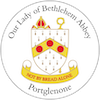Do I have a Cistercian vocation?
To discuss a possible call to live the Cistercian monastic life, you can contact Fr Aelred Magee OCSO at frmagee@yahoo.co.uk or in writing. You can also contact him via our website.
To have a vocation is to realise that God is calling you to live your life in a specific way – as a married person, single, in the service of priesthood, or by a special consecration which involves a commitment to vows made publicly within the Church. In the context of this last call the call to be a Cistercian monk or nun is revealed.
What is it to have a vocation to this life? In the first place, anyone might discover this calling – because everyone, and particularly those of us who are baptised, is called to be a person who seriously seeks God in their lives, and in that search wants prayer, service, sacrifice and a closeness to Jesus Christ to be the essential tools which get us there. This desire lies in everyone’s heart.
For a Cistercian, it is the only thing that matters.
Cistercian monks and nuns, by their lives, say that nothing else can get in the way of this walking with Jesus Christ into the Father’s presence. We recognise that his Kingdom can become a reality now for us and is the great goal which will eventually make sense of our lives. Cistercians make a decision that the only thing that is going to occupy their lives is the search for God and, with it, the search for themselves – and these two things go hand in hand.
How do I know that I might be called to live this contemplative monastic life?
Interestingly, it’s not about being an introvert! Why? Because Cistercians live in communities, and value the community life as a tool on the way to salvation – we help each other live this life, and need one another in community if this life is to make sense. Perhaps there is an awareness that my life needs greater silence, greater stillness, greater simplicity, if I am to begin my search for God in earnest. And that, above all, is important – the Cistercian life provides a beginning, every day, for those who want to make this their life’s concern. When I come to the monastery my search for God and for myself hasn’t come to an end and found completion – it’s only the very first real step on the road of life running ahead of me!
Trying to discern a vocation to the Cistercian life can be tricky! We offer here some resources which we hope can help this process: VOCATION RESOURCES
The Cistercian Way – Preferring Christ Above All Things
What are some of the elements that characterise the Cistercian contemplative life in a monastery?
The Work of God
This is St Benedict’s phrase for the Divine Office, which we also call the Liturgy of the Hours. Every day, and throughout the course of each day, the monastic community meets together in the monastery church to pray. The common prayer is structured around the psalms and the proclamation of the Word of God. This becomes the monastic’s basic food, a bread which we continue to chew through the day! Through it, the community seeks to offer a continuous work of praise to God, and we pray for the world and all those who ask our prayers.
Lectio Divina
Literally, ‘divine reading’, this is the characteristic prayer of the monk – the prayerful reading of Sacred Scripture in which the Word of God, Christ himself, speaks to us intimately and invites us to continual meditation. The monastic should be one who accepts the word in Sacred Scripture given to him as a graced gift, and becomes one who carries the word deep within himself, allowing it to become part of him, united to his breath and the beat of his heart.
Daily Work
The Rule of St Benedict teaches that each day the monks should undertake some work in service of the community. This can be very varied, depending on the situation in which an individual community finds itself, but every monastery asks each of its members to place themselves at the selfless disposal of their brethren, according to needs and gifts.
The Rule of St Benedict
Cistercians live by this ancient rule, written by St Benedict of Nursia around 520 AD, which gives the outlines of how a monastic community should shape its life. Under the leadership of an abbot, who is the community superior, the community lives, prays, eats and discerns together; they fall and find correction and mutual support; they embrace silence, humility and obedience, in order that Christ may be followed more closely. The Rule, though ancient, is a living document which still, wonderfully, nourishes and shapes our lives today.
Silence, Solitude and Monastic Enclosure
These aspects of the monk’s life are tools which support the search for God. We don’t, for example, take a vow of silence (as some think), but silence asks us to grow in awareness of God’s voice speaking within us. Solitude in a monastery is one lived in the midst of a community, so it is dynamic, not isolationist. And the enclosure is the physical space of the monastery and the monastic grounds, the exterior place which allows an interior space to be discovered and cultivated.
-Bethlehem Abbey Cistercian Family-
bethlehemcistercianfamily@gmail.com







